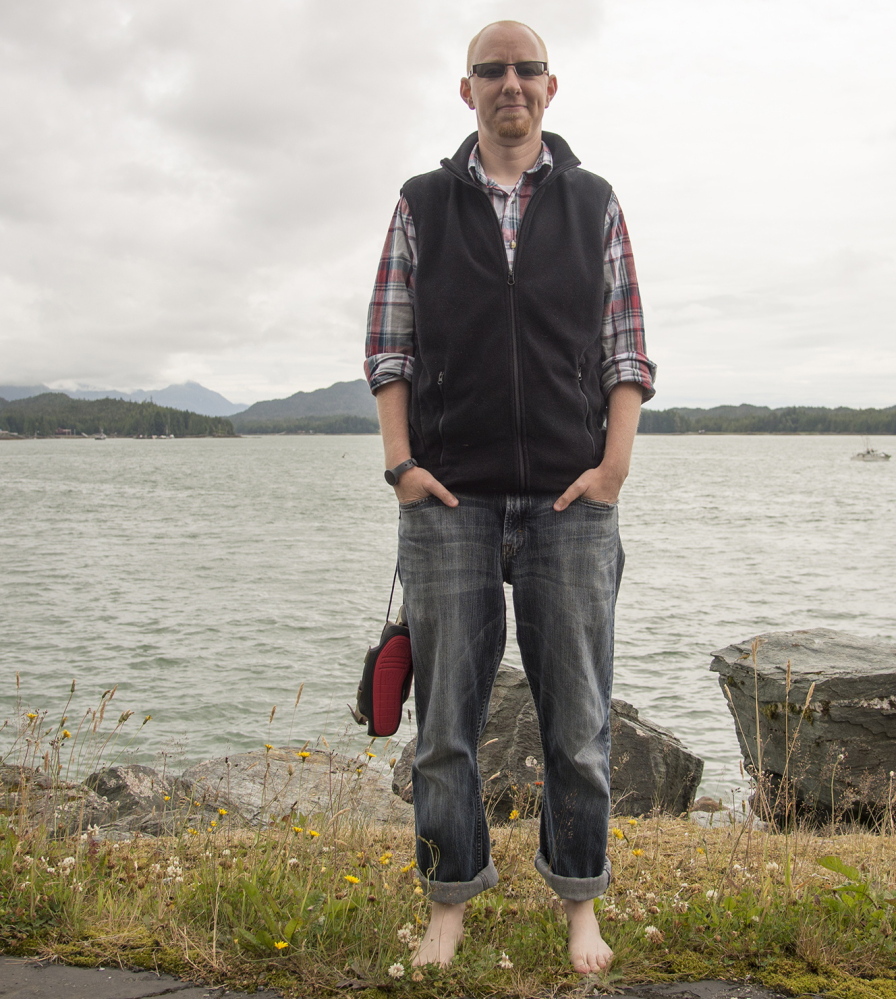KETCHIKAN, Alaska — Local pastor Peter Epler, sitting in a Ketchikan coffee shop, wasn’t preaching fire and brimstone when he talked about the heat beneath his feet.
“When it was running 75 degrees, that concrete gets hot,” said Epler, his feet bare beneath the table.
Epler is going bare from the ankle down in July to raise money for a charity that makes $15 pairs of shoes for poor children in other countries.
The sandal, called the Shoe that Grows, is made by Because International and uses buckles and buttons to grow with a child. The sandals can grow about five sizes and are made for younger children.
He leads the Ketchikan Church of the Nazarene, and said he became aware of the effort to shoe the barefoot about a year ago.
Wanting to go beyond asking his congregation for donations, Epler decided to stay shoeless for a month and let people sponsor him for a dollar a day.
“I have intentionally not changed my walking habits and my daily habits,” Epler said. “I wanted to live the way I would normally live and step on the things I would normally step on.”
Several days into the experience, he’s rediscovered the ground beneath him. Walking is a more “tactile” and natural experience, Epler said.
Unsurprisingly, concrete is rough, but other experiences were less expected. Painted concrete is smooth. The temperature differences between outdoors and indoors becomes much more obvious.
“Mystery liquids” are unsettling, he said, as was the time someone else’s Band-Aid stuck to his foot.
On the plus side, the wood on Ketchikan’s docks “feels like velvet,” he said.
Joanna Brown and her son, Timothy, are joining Epler in his barefoot campaign. She attends the Lighthouse Church of God, but is a friend of Epler.
Brown was a little late in joining, but has now gone a week without shoes. Her interactions with people have been resoundingly positive, she said.
“Grocery stores, cab drivers – everyone has responded quite well to me being barefoot,” she said in a phone interview on Friday. Kids attract different attention, according to Brown and Epler.
“It’s amazing – barefoot kids walking around get a lot of attention,” Epler said. “They get stopped.”
Myleigh Sambrano, 8, is one of those shoeless children. Sambrano is going barefoot for two weeks after learning about the idea from Epler.
“I wanted to know what it felt like for the people who don’t have shoes,” she said. “It could hurt when kids don’t have (shoes).”
People who stop kids participating in the campaign usually ask if they need money for shoes.
“Now they see the need,” Epler said of the adults, “and if they’re willing to give to shoeless kids in America, why not (outside)?”
All in all, being barefoot in America isn’t so bad, he said.
“In this process I’ve found barefoot societies and I can kind of understand it. After your feet get accustomed to it, I’m assuming, it becomes a lot easier. It’s just an interesting way to live.”
So will he be the barefoot pastor?
“It’s really easy to say yes after seven days,” he said. “It feels more natural to walk this way, so I’d definitely go barefoot more often, I think. We’ll see after a month.”
Send questions/comments to the editors.



Success. Please wait for the page to reload. If the page does not reload within 5 seconds, please refresh the page.
Enter your email and password to access comments.
Hi, to comment on stories you must . This profile is in addition to your subscription and website login.
Already have a commenting profile? .
Invalid username/password.
Please check your email to confirm and complete your registration.
Only subscribers are eligible to post comments. Please subscribe or login first for digital access. Here’s why.
Use the form below to reset your password. When you've submitted your account email, we will send an email with a reset code.